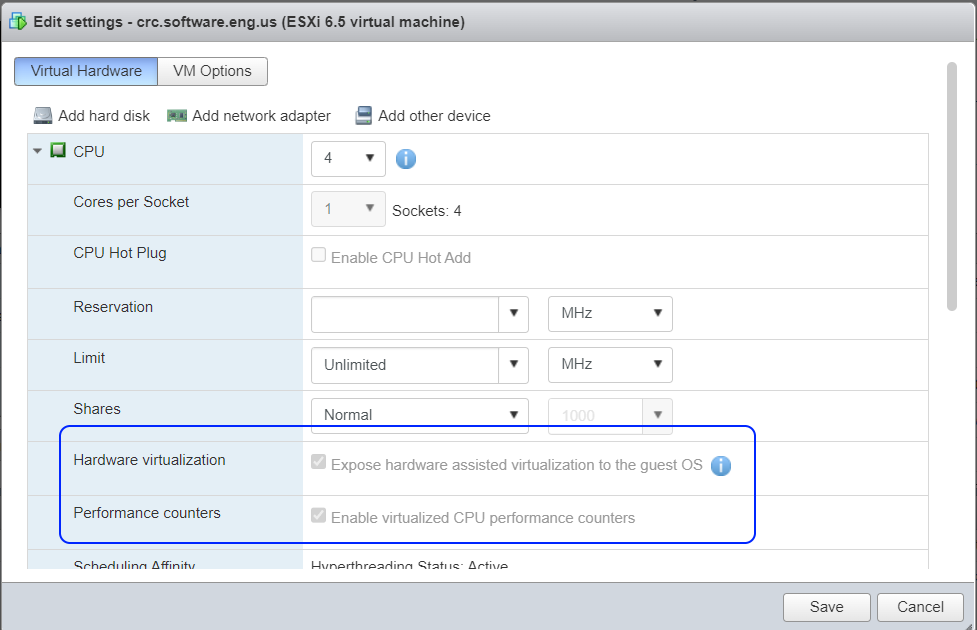
Hardware Requirements for CodeReady Containers
- Minimum 4 virtual CPUs
- Minimum 10 GB of memory (RAM)
- Minimum 35 GB of storage, where the majority of the storage is partitoned to the /home directory since CodeReady Containers is run from a users home directory.
AVOID TROUBLE
I ran into problem after problem after problem when attempting to run CodeReady Containers on a VMWare ESXi virtual machine. Blog posts seem to suggest that CodeReady Containers has not been designed or tested to run on a VMWare ESXi virtual machine, and is instead really intended for local developer on a users personal laptop or on a dedicated PC. For this reason, it almost always make sense to install CodeReady Containers on a Windows Laptop or PC.
If you are going to try running on VMWare, ensure the virtual machine has hardware virtualization enabled.

Operating System Requirements for CodeReady Containers
- MacOS 10.12 Sierra or higher
- I tried Fedora version 34, Fedora version 36, CentOS Stream 8, and CentOS Stream 9, and the only Operating System that I was able to get past errors and get CodeReady Containers up and running on was CentOS Stream 9 with a graphical desktop since CodeReady Container is designed for local testing (I tried to expose a route, it just wasn't happening).
Network Manager
Network Manager must be installed before OpenShift can be issued. The yum list command can be used to determine if NetworkManager is installed.
yum list NetworkManager
If NetworkManager is not installed, the yum install command can be used to install NetworkManager.
yum install NetworkManager
Download installation binaries
- Go to cloud.redhat.com/openshift/install.
- Sign in with your Red Hat username and password.
- Select Run on Laptop or Local.
- Select your Operating System and select Download Code-Ready Containers.
- On a Windows OS, this will download a file such as crc-windows-amd64.zip.
- On a Mac OS, this will download a file such as crc-masos-amd64.tar.xz.
- On a Linux OS, this will download a file such as crc-linux-amd64.tar.xz.
- Select Download pull secret. This will download a file such as pull-secret.txt.
Install
In a terminal, issue the following command.
tar -xpvf crc-linux-amd64.tar.xz
Move into the newly extacted directory.
cd crc-linux-<version>-amd64
List the directories in your $PATH.
echo $PATH
If /usr/local/bin is not in your $PATH, add the following to your /home/username/.bash_profile file.
PATH=$PATH:/usr/local/bin
export PATH
Copy the crc command to /usr/local/bin.
cp crc /usr/local/bin
Use the following crc config commands to prevent "Executing systemctl action failed: exit status 1: Failed to connect to bus: No medium found" from being returned when issuing the crc setup command.
crc config set skip-check-daemon-systemd-unit true
crc config set skip-check-daemon-systemd-sockets true
The crc setup command can be used to install and setup OpenShift CodeReady Containers.
crc setup
The crc start command is used to start OpenShift CodeReady Containers.
crc start
Did you find this article helpful?
If so, consider buying me a coffee over at 